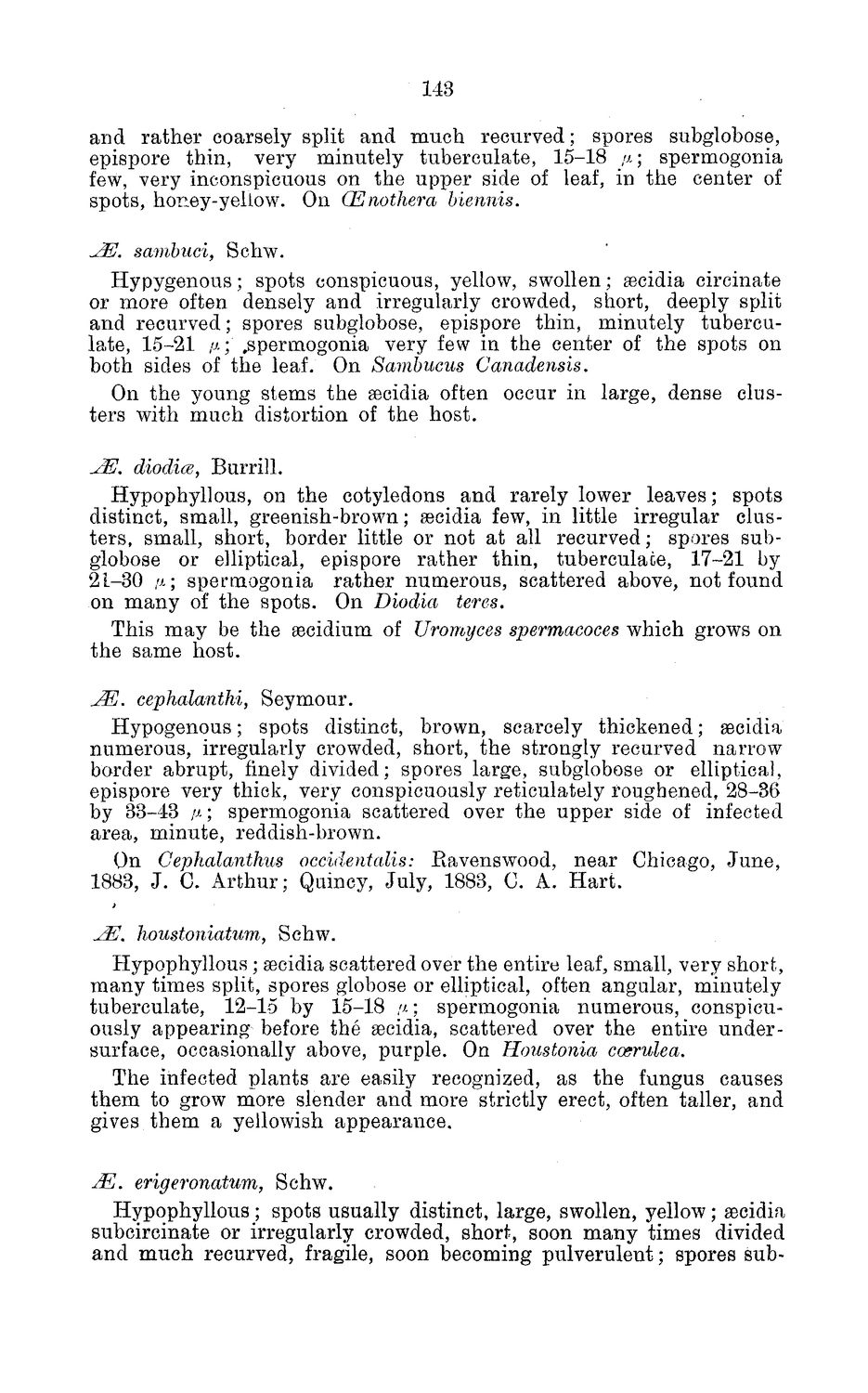| |
| |
Caption: Board of Trustees Minutes - 1884
This is a reduced-resolution page image for fast online browsing.

EXTRACTED TEXT FROM PAGE:
143 and rather coarsely split and much recurved; spores subglobose, epispore thin, very minutely tuberculate, 15-18 ,u; spermogonia few, very inconspicuous on the upper side of leaf, in the center of spots, honey-yellow. On CEnothera biennis. JE. sambuci, Schw. Hypygenous; spots conspicuous, yellow, swollen; a3cidia circinate or more often densely and irregularly crowded, short, deeply split and recurved; spores subglobose, epispore thin, minutely tuberculate, 15-21 fi; .spermogonia very few in the center of the spots on both sides of the leaf. On Sambucus Canadensis. On the young stems the aecidia often occur in large, dense clusters with much distortion of the host. JE. diodice, Burrill. Hypophyllous, on the cotyledons and rarely lower leaves; spots distinct, small, greenish-brown; secidia few, in little irregular clusters, small, short, border little or not at all recurved; spores subglobose or elliptical, epispore rather thin, tuberculate, 17-21 by 21-30 /x; spermogonia rather numerous, scattered above, not found on many of the spots. On Diodia teres. This may be the aecidium of Uromyces spermacoces which grows on the same host. JE. cephalanthi, Seymour. Hypogenous; spots distinct, brown, scarcely thickened; secidia numerous, irregularly crowded, short, the strongly recurved narrow border abrupt, finely divided; spores large, subglobose or elliptical, epispore very thick, very conspicuously reticulately roughened, 28-36 by 33-43 /JL; spermogonia scattered over the upper side of infected area, minute, reddish-brown. On Cephalanthus occidentalis: Eavenswood, near Chicago, June, 1883, J. C. Arthur; Quincy, July, 1883, C. A. Hart. JE. houstoniatum, Schw. Hypophyllous ; secidia scattered over the entire leaf, small, very short, many times split, spores globose or elliptical, often angular, minutely tuberculate, 12-15 by 15-18 ,u; spermogonia numerous, conspicuously appearing before the secidia, scattered over the entire undersurface, occasionally above, purple. On Houstonia coerulea. The infected plants are easily recognized, as the fungus causes them to grow more slender and more strictly erect, often taller, and gives them a yellowish appearance. M. erigeronatum, Schw. Hypophyllous; spots usually distinct, large, swollen, yellow; aecidia subcircinate or irregularly crowded, short, soon many times divided and much recurved, fragile, soon becoming pulverulent; spores sub-
| |